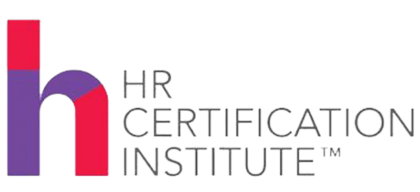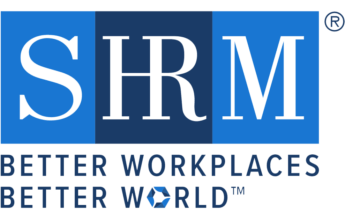Employee Referral Strategies | A Few Things to Consider
We are a certified Continuing Education provider for



“Employee referrals are by far the number one source for the best new hires,” concludes every study ever on the topic
Employee referral is companies’ favorite strategy to hire and retain top talent. When an existing employee (or an external partner like a client or a supplier) recommends another person for a job, then the recommended candidate is an employee referral. The structured manner in which organizations involve their existing employees in finding new candidates for available positions represents an employee referral program. Today, we will discuss more regarding this hiring technique. We will also present you with a more detailed guide on how to build a successful strategy in the nearest future. Today, we will offer you some information about referral programs together with some tips regarding their maximization!
What Is an Employee Referral Program and How Does it Work?

An employee referral program is a talent acquisition strategy meant to maximize the potential of your existing employees’ networks to hire experts. Allowing your team members to become actively involved in your organization’s recruiting process is an excellent employer branding strategy. Moreover, when you transform all your coworkers into active recruiters, you lower the company’s chances to make hiring mistakes.
The logic behind such programs is simple.
- On one hand, if you have 10 employees and each of them has 100 contacts across their social media networks, you gain almost instant access to 1,000 connections and possible candidates.
- On the other hand, your existing employees are the most qualified experts in finding suitable candidates for available positions. Your coworkers know the company’s mission, embrace the organizational culture, enjoy the benefits, and can easily find contenders who they know would be great fits for that company’s culture, job description, etc.
Building an employee referral program takes time and strategy and we will discuss this in our future guide. For now, what you need to know is that when you have such a program in place, you enjoy a constant flow of resumes and recommendations you can add to your database.
Evidently, not all recommendations will convert into hires. However, studies show that even if employee referrals make about 7% of all applications, they yield some of the highest conversion rates, accounting for about 40% of all hires. The numbers prove, therefore, that referred candidates are better fits for the job profiles and the company’s culture than candidates coming from job boards and employment websites.
As you can easily figure out, in exchange for these referrals, your established employees receive rewards. We will discuss them a little in this article, detailing on them in our upcoming guide.
What Are the Benefits of Employee Referral Campaigns?
The most evident benefit of such referral programs is that companies find great candidate fits. However, the list of advantages does not stop here. Let’s see how implementing a sustainable employee referral program can help you grow an organization successfully.
1. Improved Hire Quality
Some of the best job candidates are passive job seekers. However, since an established employee can vouch for a certain candidate, you can create a personalized job offer. An interesting statistic shows that
job interviews from employee referrals are much more likely to lead to an accepted job offer; employee referrals boost the odds of a successful job match by a statistically significant 2.6-6.6 percent.
Increasing the quality of hire by targeting only candidates you know will make an excellent fit with your company’s culture, demands, and growth vision leads, in turn, to other significant benefits.
2. Fast Hires
Hiring without a referral program means going through all the motions of initial job advertising, screening resumes, organizing interviews, selecting and applying pre-employment assessments, scheduling & organizing interviews, etc. When you have referred candidates in your database, you can skip directly to the pre-employment testing phase and the interviews.
3. Lower Hiring Costs
Since a referral program cuts down the time spent with finding the best candidate for a job, it naturally cuts the investment in the entire hiring process. Even if you offer financial bonuses to the employees making the referrals, you will still see significant savings.
4. Better Organizational Culture Matches
If the employee referral program you put in place is of high quality, then you know the candidates coming your way are top performers for the available jobs. But are they also great cultural fits? Current research suggests that they are. Let’s see a few reasons:
- Referred candidates already know at least one person in your company and have a good idea of how you work, what you want, and where you want to go next with the business;
- Referrals know what to expect from your company when they accept your hiring offer;
- Referred candidates go through a smoother onboarding process and tend to stay longer with your company as it is a good fit for them, just as they are a good fit for you.
Talent retention is of critical importance for any company big or small. Numerous specialists show that
referral hires have greater job satisfaction and stay longer at companies – 46% stay over 1 year, 45% over 2 years, and 47% over 3 years.
However, increased retention does not only refer to the freshly hired candidates. Some statistics show that the established employees who make good referrals also tend to stay longer with the organization.
5. Better Hires for Tough Jobs
For some jobs and positions, it is easy to get a host of good applications. Alternatively, you can browse portfolio websites and handpick great candidates that seem to match the job role in question and your organizational culture. However, when you are recruiting for difficult jobs, demanding roles, and sensitive positions, the referral program will be the one bringing the best candidates to your doorstep.
When you want to scale a team fast, hire skilled project managers, and attract visionary leaders for your departments, job ads might not cut it. However, when you make these experts an offer they cannot refuse, backed up by your impeccable employer brand, you might find the talent you seek.
On the other hand, in highly competitive scenes, like innovation technology, digital marketing, cutting-edge engineering, etc., finding people with extremely specific sets of skills might seem impossible at times. For this reason, turning your employees into headhunters is efficient, productive, and profitable for all parties involved.
9 Tips to Run a Successful Employee Referral Strategy
In the guide we plan to make available for you in the immediate future, we will describe in detail the steps you need to take to create and manage an efficient referral program. As anything in this world, such campaigns come with their fair share of pros and cons. Moreover, we will also discuss the prerequisites of successful employee referral strategies. Hint: employer branding is crucial.
Until then, let’s see some starting points!
1. Have a Captain
There should be one person responsible for managing and communicating the employee referral program. That person is responsible for creating the content, distributing results, and holding leadership accountable for executing all the best practices. It makes measuring results easier. For the agents in charge, such approach also makes it easier to evaluate how well the captain performed. As you do these campaigns, you can assess the results against past efforts.
A critical component of any referral program is a solid recognition system. You can offer rewards in a more efficient and objective manner when you have clear data showing that the team and the captain outperformed previous efforts.
2. The Program Should Be Fun, Rewarding, and Time-Bound
For starters, try running a 30-day campaign. Track and announce weekly the number of referrals. Keep in mind that you should recognize people for their contribution regardless of the outcome. This approach can be a great way to get everyone’s competitive spirit going.
3. Reward the Referral, not the Outcome
It is important to emphasize this aspect. Track referrals, not just people hired. Companies should meet any referral with some acknowledgment. As we said above, keeping things fun is important to keep your employees engaged with the program.
Turn the campaign into a 30-day contest and reward the people who deliver the most referrals with something useful and appreciated: tech devices, gift cards, and an expensive dinner for two, or anything else that is fun and desirable. So no cheesy rewards!
4. Consider Cash Rewards
Speaking of contents prizes, having a cash reward program paying people for those who get a job and stay for a certain amount of time is a great way to incentivize your established employees. Programs like this can be standing and ongoing.
5. Don’t Let the Hype Fade
Have senior leadership mention the referral program often (but without becoming annoying or disruptive). It helps to ensure that everyone in your company knows the referral program is a serious thing, not just some new corporate fad. Nevertheless, it is not a good idea to put pressure on our employees. After all, they cannot refer to you their entire list of social media friends just to get rewards. It would be an HR mess to screen doctors and lawyers for your available coding jobs.
However, you can insist that your employees dig a little deeper and provide you with good referrals. It is a chance for senior and mid-level leadership to acknowledge those who contribute, making the others want the same praise and inspiring better overall results from the campaign.
6. Make Things Easy
Give your team members email templates they can blast out to their friend groups. Create social media posts they can share easily with others. Have flyers they can hand out or email off to friends and family. Please don’t make them reinvent the wheel to help out as they have their core job to worry about already.
7. Make Technology Your Friend
Leverage technology tools that will help track referrals so you can give the proper credit when it is due. It will reduce administration efforts to track and communicate about the referral drive as well.
8. Ensure Everyone Sends the Right Message
Anyone and everyone should be referring their network to any job you have open. Take advantage of everyone’s network to get the best results. Some people “out there” are not even considering changing jobs or careers. As ambassadors for your company, your employees should consider all their friends, acquaintances, family members, and so on. Of course, for the people “out there” is a compliment to receive new job offers, but make sure your proposal is on par with their job skills and your employees convey your message correctly and attractively.
9. Employees Refer; Managers Assess
Don’t make it your team members’ job to assess the referral. Their responsibility is to present the opportunities and pass along your message to the interested parties. Don’t judge or reprimand your coworkers for bad referrals; give them a high five instead. It is the managers’ and HR experts’ job to do due diligence and make sure the person is a fit. If a candidate is not a good match, it is also their job to let the contender go gracefully.
Maximizing Your Employee Referral Program: Final Thoughts
If you are already running an employee referral program for your company, we’d like to know more about your experience with it. Does it yield the expected results? For those of you who are not yet running such a referral program, we’d like to invite you to address the questions you have regarding such a strategy so we can create a comprehensive and useful guide for all recruiters and executives! Don’t be shy in asking questions and sharing opinions on this matter!
Book An Appointment
Schedule a Free Consultation to Turn your Hiring Process into a Top Talent Generating Machine
Talk With Us Now
Identify Top Candidates ASAP
(833) 332-8378
